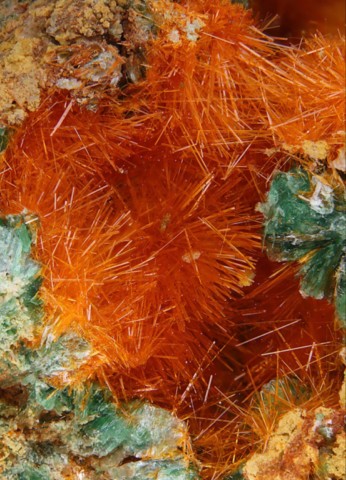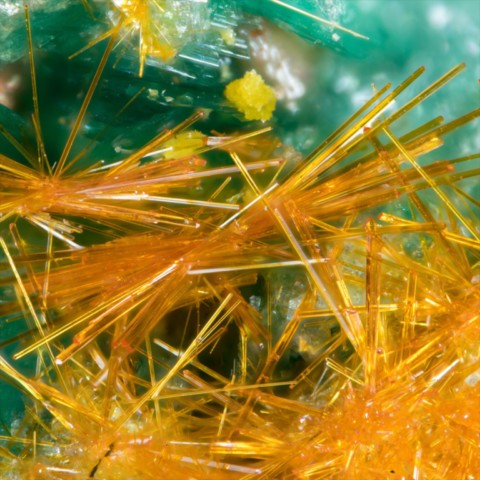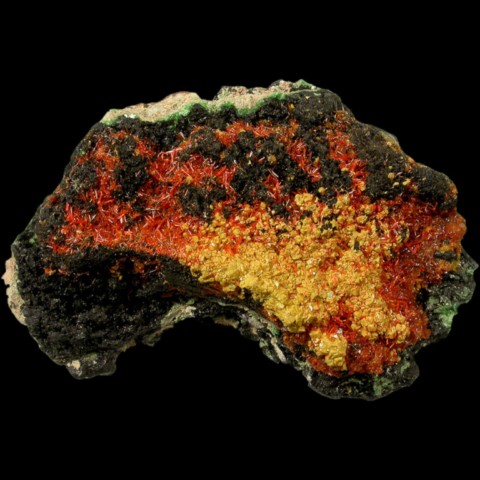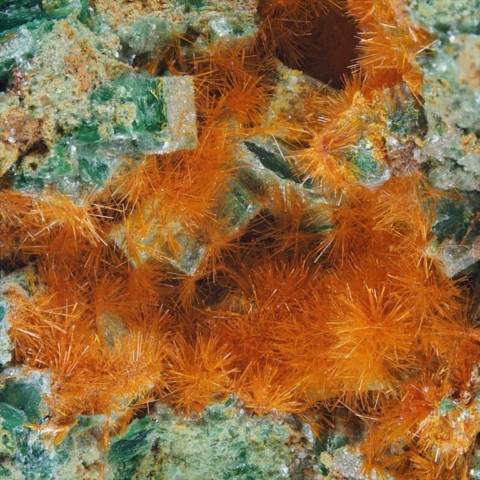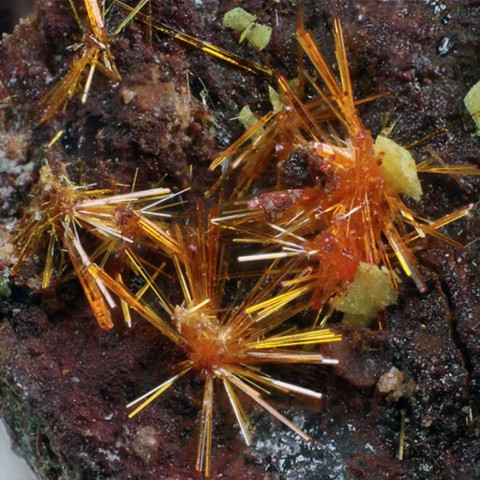 Curite - Encyclopedia
Curite - Encyclopedia
Class : Oxides and hydroxides
Subclass : Uranyl hydroxides
Crystal system : Orthorhombic
Chemistry : Pb3(UO2)8O8(OH)6 3H2O
Rarity : Rare
Curite is one of seven currently known mixed oxides of lead and uranium. They are secondary minerals present in the oxidation zone of uranium deposits where they derive from the alteration of pitchblende. Curite is, with fourmarierite, one of the main "orange gummites", clearly recognizable in the alteration rings of the pitchblende. Its name is dedicated to the French physicist Pierre Curie, professor at the Sorbonne and known for his research on radioactivity, Nobel Prize in physics in 1903 with his wife Marie Curie. Curite occurs in acicular crystals of 5 mm or less, with a strong adamantine luster, in microcrystals, in powdery coatings, or in compact cryptocrystalline masses, orange to orange-red in color. it can completely replace uraninite crystals (pseudomorph). It is a very incidental uranium ore.
Main photo : Curite of Shinkolobwe, Katanga, Democratic Republic of Congo © Elmar Lackner
Curite in the World
Twinning
No known twin for this mineral species.
Fakes and treatments
No fakes listed for this mineral species.
Hardness : 4 to 5
Density : 6.98 to 7.4
Fracture : Underterminated
Streak : Orange
TP : Translucent to transparent
RI : 2.060 to 2.150
Birefringence : 0.090
Optical character : Biaxial -
Pleochroism : Visible
Fluorescence : None
Solubility : Acids
Magnetism : None
Radioactivity : Very strong

